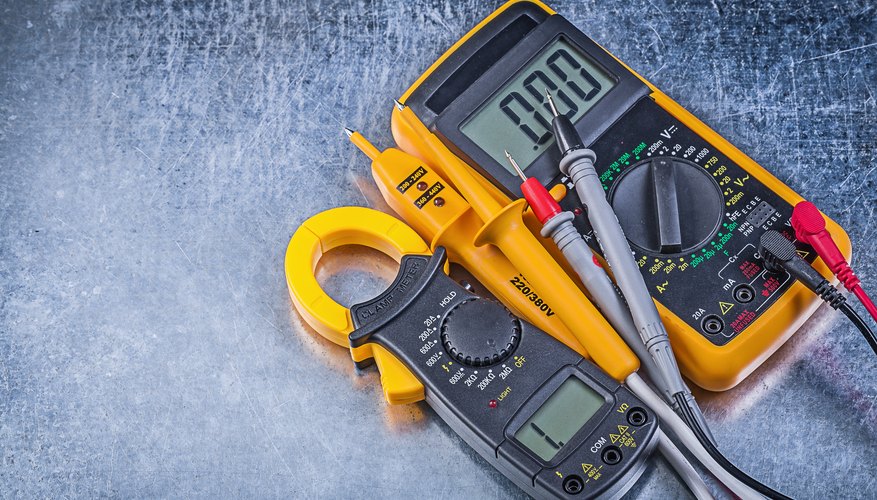Cen Tech Digital Multimeter 69096 Manual

Jan 13, 2018 - Cen-tech Digital Multimeter 69096 Manual. Do not use the tool if any switch does not operate properly. SKU 69096 For replacement parts,.
Originally recorded March 22, 2014. This is a review of the Harbor Freight Cen-Tech 7 Function Digital Multimeter, Item # 6.
It likely also applies to its bigger brother, the 7 Function Digital Multimeter With Backlight, Item # 92020. This is a basic VOM. It's not necessarily of the greatest quality, but it can give you some reasonable measurements. Oftentimes, they have this item for FREE with a coupon, and for the low, low price of free you can't beat it. The best part is this meter is adjustable, which means you can make it read even closer to the actual measurement, if of course you already have a higher quality meter. It's great to have a few of these around, you can keep them in several places so you'll always have one on hand, such as the car, garage, workbench, basement, etc.
An electrically savvy handyman frequently carries a digital multimeter in his tool box or service vehicle. A properly used multimeter measures both voltage and current for alternating current, or AC. The multimeter also measures voltage and current for direct current, or DC. Electronic hobbyists can also test diodes, resistors and transistors with the Cen-Tech 92020 digital multimeter. Safety-conscious workmen and hobbyists receive prior instruction in the multimeter’s operation, as the device measures potentially deadly electrical voltages.
Measuring AC Voltage Place the red lead’s plug end into the jack marked “V-ohm-mA.” Place the black lead’s plug end into the jack marked “COM.” Set the multimeter to read AC voltage. Turn the range selector knob to the position marked “750 ACV.” Turn the meter on. Slide the power switch to the “On” position. Touch each probe to the item for which voltage is being measured. Use the probe ends of the leads. Do not allow your fingers to touch the probes, as lethal voltage may be present.
Read the digital display’s indicated voltage. Adjust the range selector knob to a lower range if the voltage is less than 200 volts. Turn the meter off. Slide the power switch to the “Off” position.
Measuring DC Voltage Place the red lead’s plug end into the jack marked “V-ohm-mA.” Place the black lead’s plug end into the jack marked “COM.” Set the multimeter to read DC voltage. Turn the range selector knob to the position marked “1,000 VDC.” Turn the meter on. Slide the power switch to the “On” position. Touch each probe to the item for which voltage is being measured. Use the probe ends of the leads.
Do not allow your fingers to touch the probes, as lethal voltage may be present. Read the digital display’s indicated voltage. Adjust the range selector knob to a lower range if the voltage is less than 200 volts.
Turn the meter off. Slide the power switch to the “Off” position. Measuring DC Current Place the red lead’s plug end into the jack marked “10A.” Place the black lead’s plug end into the jack marked “COM.” Set the multimeter to read DC current. Turn the range selector knob to the “10A” position. Download free software franson gpsgate 26 license key. Turn the meter on. Slide the power switch to the “On” position. Touch each probe to the item for which current is being measured.

Use the probe ends of the leads. Read the digital display’s indicated current. Adjust the range selector knob to the “200 mA setting.” Move the red plug to the “VmA” jack if the reading is 200 mAmps or less. Turn the meter off. Slide the power switch to the “Off” position. Measuring Resistance Turn off the power to the device for which resistance is being measured.
This ensures the multimeter will not be damaged. Place the red lead’s plug end into the jack marked “V-ohm-mA.” Place the black lead’s plug end into the jack marked “COM.” Set the multimeter to read resistance. Turn the range selector knob to the “200 ohm' position. Turn the meter on. Slide the power switch to the “On” position. Touch the red and black probes together. The display should indicate a resistance of 0 ohms.
Touch each probe to the item for which resistance is being measured. Use the probe ends of the leads.